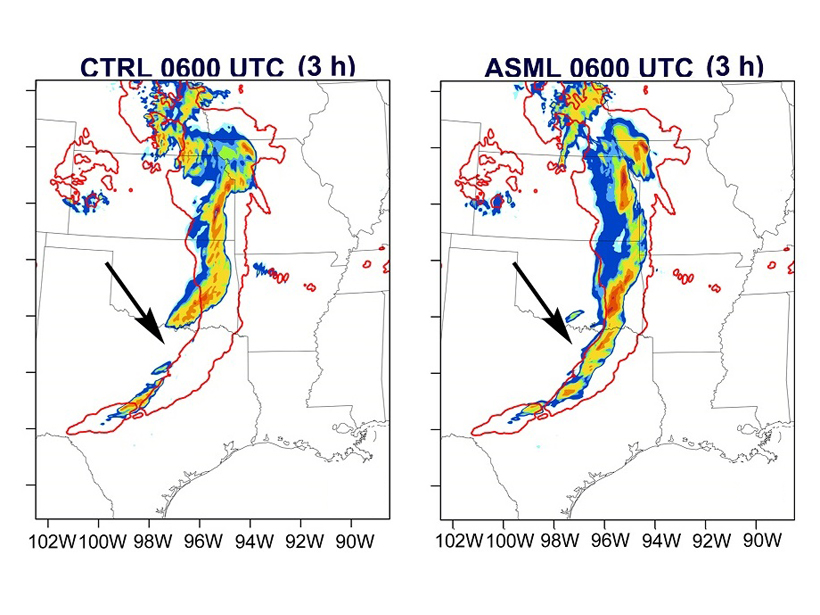Source: Journal of Geophysical Research: Atmospheres
Forecasting the timing and location of heavy precipitation in thunderstorms has been a challenge in the numerical weather prediction community. Wang et al. [2017] demonstrate how a new data type can be used in models to improve prediction of heavy precipitation. They use lightning data and a relationship between lightning and graupel mixing ratio to modify the freezing rate of rain droplets in the model. The authors perform three case studies using this method. Their results suggest that incorporating lightning data improves the simulations of updrafts, cold pool and front locations, and the forecasts of lightning and precipitation. The study can lead to better short-term forecasts of extreme weather events.
Citation: Wang, H., Liu, Y., Cheng, W. Y. Y., Zhao, T., Xu, M., Liu, Y., Shen, S., Calhoun, K. M. & Fierro, A.O. [2017]. Improving Lightning and Precipitation Prediction of Severe Convection using Lightning Data Assimilation with NCAR WRF-RTFDDA. Journal of Geophysical Research: Atmospheres, 122. https://doi.org/10.1002/2017JD027340
—Minghua Zhang, Editor-in-Chief, JGR: Atmospheres
Text © 2017. The authors. CC BY-NC-ND 3.0
Except where otherwise noted, images are subject to copyright. Any reuse without express permission from the copyright owner is prohibited.

